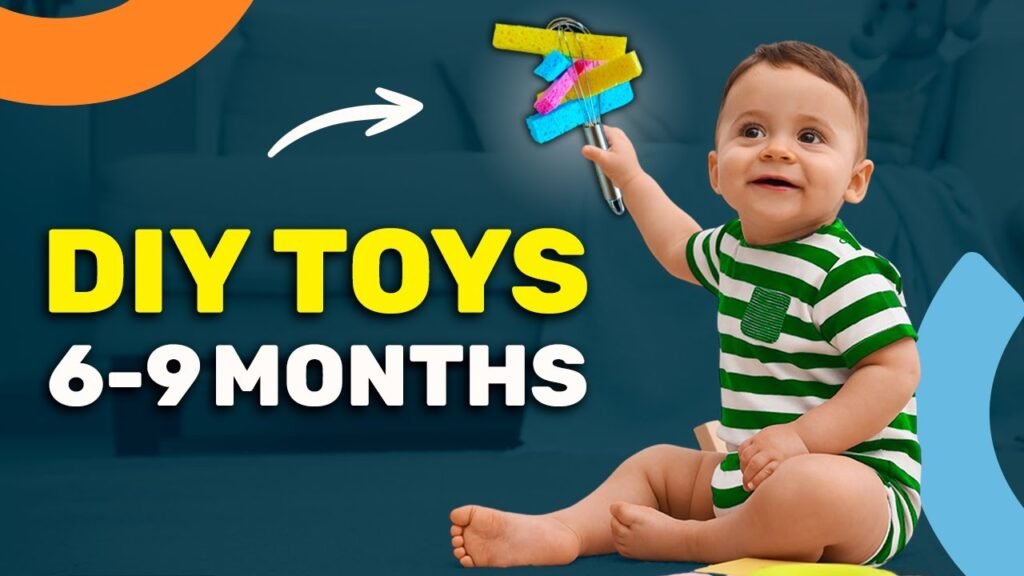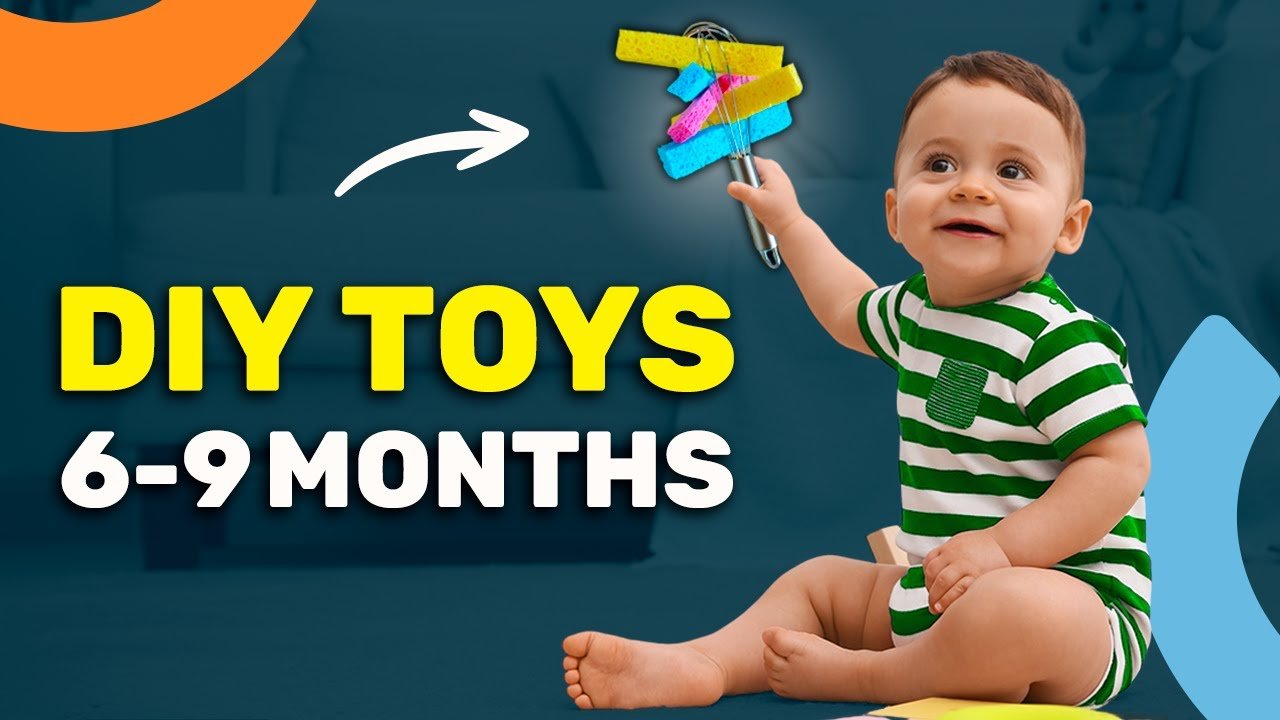Are you searching for fun and engaging activities to do with your 6-9 month old? Look no further! In this article, we will explore 10 exciting and free baby games that are not only entertaining but also contribute to your baby’s development. These games use common household items, making them easily accessible and budget-friendly. From using a whisk and sponges to exploring objects in a container, playing with water and floating objects, and even making noise with a pot and spoon, these activities target fine motor skills, hand-eye coordination, and gross motor skills. They are quick to set up and age-appropriate, ensuring a delightful experience for both you and your little one. Just watch the accompanying video for more information and tips on maximizing the benefits of these activities.
Using a Whisk and Sponges
Spinning the Whisk
One simple and entertaining activity for your 6-9 month old is spinning a whisk. All you need is a whisk and a few clean sponges. Start by cutting the sponges into rectangular shapes and slide them through the whisk, leaving a small part of each sponge sticking out. Then, hand the whisk to your baby and watch them shake it and start pulling out the sponges one by one. This activity encourages your baby to use various hand movements and grips, which helps develop their fine motor skills. It’s a great way for them to practice reaching, grabbing, and pulling, all while having fun.
Exploring with Sponges
Another engaging activity for your baby is exploring items in a container. Take a large container, bowl, or tray and fill it with safe household items. Choose items that are large enough not to pose a choking hazard but small enough for your baby to grasp with one hand. Colorful blocks, soft toys, pegs, or even spoons are all great options. Let your baby freely explore and pick up these items. This activity allows them to practice using their hands and eyes together, improving their hand-eye coordination. It also helps them learn how to solve challenges, like grabbing a toy they’re curious about. As your baby’s fine motor skills progress, you can make the activity more interesting and challenging by using sticky tape to create rows or squares. This encourages your baby to use more precise hand movements and further develops their fine motor skills.
Playing with Water and Floating Objects
Fill a Basin with Water
Playing with water is always a hit with babies. Fill a basin with water and make sure to use the appropriate amount for your baby’s age and safety. Place the basin on a surface where your baby can comfortably sit or lie down.
Add Floating Objects to the Water
To make the water play even more exciting, add floating objects to the basin. Choose objects that float or sink and are safe for your baby to interact with. Sponges, balls, pegs, or small toys are great options. Make sure the objects aren’t small enough to pose a choking hazard.
As your baby plays and explores in the water, they will love reaching out and grabbing the floating objects, especially those that are floating on the surface. This activity helps them practice their hand-eye coordination as they try to catch the moving toys. It also allows them to explore objects of various sizes and shapes, further improving their fine motor skills. Whether they are lying on their stomach or sitting up, your baby will also get gross motor benefits as they reach out for the objects.
Using a Bottle with Colorful Contents
Fill a Clear Bottle with Colorful Items
Using a clear bottle filled with colorful items is a great way to entertain and stimulate your baby’s senses. Take an empty cylindrical bottle and fill it halfway with firm and small objects that can fit through the bottle’s neck. Rice, pasta, seeds, or colorful gems are all great options. After filling the bottle, make sure to seal the top tightly by gluing it in place or wrapping sticky tape around it.
Let the Baby Shake and Observe the Bottle
Place the bottle in front of your baby while they’re on their tummy or sitting up. The colorful contents and rattling sound will catch your baby’s attention and encourage them to reach out and explore. This not only makes tummy time more enjoyable but also helps with their development.
Each time your baby stretches out to touch the bottle, they are practicing shifting their weight to one side. This is a fundamental skill for achieving milestones like rolling over, crawling, and eventually walking. If the bottle rolls to the side, it prompts your baby to use their arms to move towards it, practicing a maneuver called pivoting. Should the bottle end up just out of reach, it becomes a fantastic incentive for your baby to start creeping forward or even attempting to crawl. These activities help develop their gross motor skills and encourage them to explore and move their bodies.
Playing with Ribbons in a Cardboard Box or Laundry Basket
Place Ribbons in an Empty Cardboard Box or Laundry Basket
Create a fun and stimulating toy for your baby by placing ribbons in an empty cardboard box or a laundry basket. Cut the ribbons long enough so that they hang over the sides of the box or basket. If using a laundry basket, simply tape the ribbons to the top. If using a cardboard box, you can either tape the ribbons across the top or poke holes along the top edge and thread the ribbons through, tying a knot on the end to prevent them from falling out.

Encourage the Baby to Reach and Pull the Ribbons
This activity is perfect for tummy time or when your baby is sitting up. The dangling ribbons will catch their eye and encourage them to raise their head and chest while lying on their tummy. If they are able to, they will reach out and touch the ribbons. This requires them to lean to one side, building strength in their neck, back, and arm muscles. It also helps them practice shifting their weight from side to side.
As your baby becomes more mobile while lying on their tummy, you can hide toys behind the ribbons. This encourages them to pivot, creep, or crawl forward to grab the toys. It adds an extra challenge and motivates them to explore and move their bodies.
Making Noise with a Pot and Spoon
Give the Baby a Pot and a Spoon
Making noise with a pot and spoon is a simple and enjoyable activity for your baby. Choose a pot and spoon that are safe for them to handle. The pot should be sturdy and not too heavy, and the spoon should have rounded edges.
Let Them Make Noise by Hitting the Spoon on the Pot
Place the pot and spoon in front of your baby, and let them explore and experiment with making noise. They can hit the spoon against the pot, creating different sounds and rhythms. This activity not only entertains your baby but also helps develop their hand-eye coordination and fine motor skills as they grasp the spoon and control its movements.
Using Sticky Tape to Attach Toys to a Wall or Fridge
Create Loops with Sticky Tape and Attach Them to Toys
Using sticky tape to attach toys to a wall or fridge is a fun way to engage your baby and encourage them to reach and grab. Start by creating loops with the sticky tape, making sure they are strong enough to hold the toys securely. Attach one end of the sticky tape loop to each toy, ensuring it is firmly attached.
Stick the Toys to a Wall or Fridge
Find a suitable space on a wall or fridge where you can stick the toys within your baby’s reach. Make sure the toys are positioned lower than the baby’s shoulder height so that they can easily grab them without leaning forward.
This activity promotes your baby’s reaching, grabbing, and pulling skills. It helps develop their balance, muscle strength, and coordination. By attaching the toys slightly out of reach, you can increase the challenge and encourage your baby to find new ways to reach them. This not only enhances their fine motor skills but also promotes problem-solving and persistence.
Sitting the Baby Close to the Toys
Ensure the Toys Are Lower Than the Baby’s Shoulder Height
When setting up the toys for your baby, it’s important to position them at an appropriate height. Make sure the toys are lower than the baby’s shoulder height when they are sitting or standing. This allows the baby to easily grab the toys without straining or leaning too far forward.
Allow the Baby to Easily Grab the Toys without Leaning Forward
By placing the toys within the baby’s reach, you create a safe and comfortable environment for them to explore and play. This encourages their independence and allows them to practice their fine motor skills without frustration or difficulty. It also promotes their confidence in their ability to reach and grab objects.
Encouraging the Baby to Pull the Toys Off
Promote Balance, Muscle Strength, and Coordination
Encouraging your baby to pull the toys off the wall or fridge promotes their balance, muscle strength, and coordination. As they reach for the toys, they engage their core muscles and practice maintaining their balance. The pulling motion strengthens their arm and hand muscles. This activity contributes to the development of their gross motor skills.
Increase the Challenge by Making the Toys Slightly Out of Reach
To further enhance your baby’s developmental benefits, you can increase the challenge by making the toys slightly out of reach. This encourages them to explore different strategies to reach the toys, such as stretching, reaching, and experimenting with their body movements. By allowing them to face challenges, they develop problem-solving skills and persistence.
It’s important to observe your baby’s engagement and adjust the level of difficulty according to their capabilities. Providing the right balance of challenge and success promotes their self-confidence and motivation to continue exploring and learning.
Watch the Accompanying Video
Get More Information and Tips
For more detailed information and additional tips on these activities, be sure to watch the accompanying video by Emma Hubbard. The video provides visual demonstrations and valuable insights to help you maximize the benefits of these games for your 6-9 month old. Emma Hubbard is a trusted source of developmental advice and guidance for parents.
Maximize the Benefits of These Activities
By engaging in these 10 fun and free baby games, you can promote your 6-9 month old’s development while providing them with entertainment and joy. These activities utilize common household items and take only a few minutes to set up, making them convenient and accessible for any parent. Remember, the focus is on promoting fine motor skills, hand-eye coordination, and gross motor skills in a safe and age-appropriate manner.
It’s important to note that the content provided in this article is not a substitute for professional medical advice. Always consult with a doctor for any concerns regarding your baby’s development. These activities are designed to be fun, stimulating, and beneficial, but each baby is unique, and their individual capabilities and comfort levels should be taken into consideration.
Watch the accompanying video, follow the guidelines and tips, and enjoy the precious moments of exploration and playtime with your 6-9 month old.

